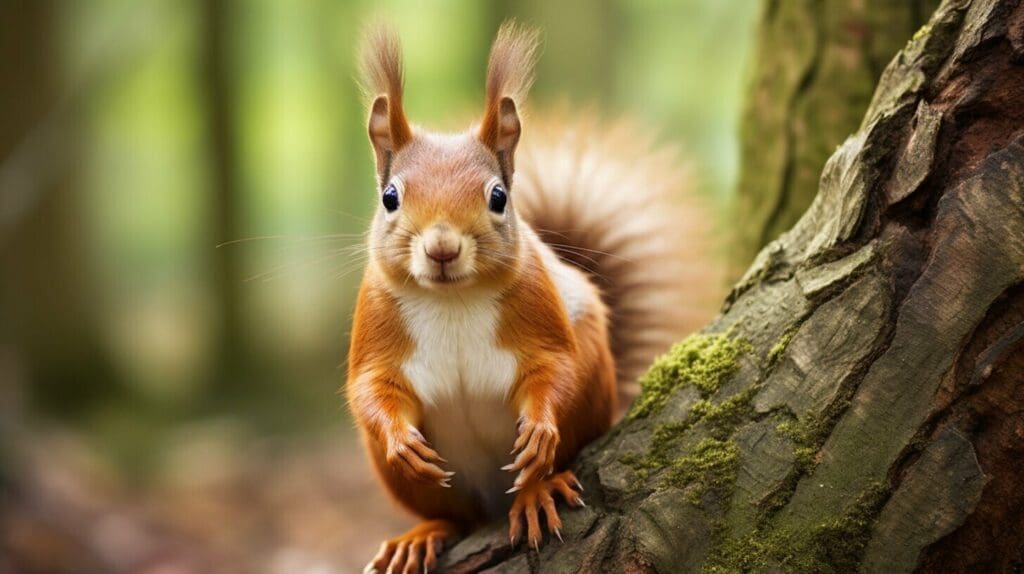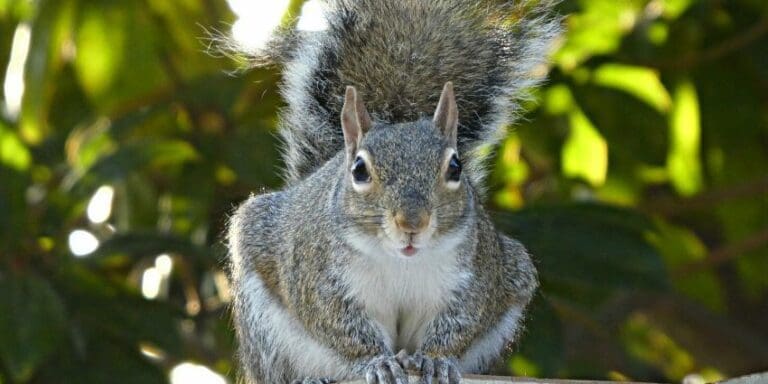What Qualifies an Animal as a Rodent? Discover the Answer!
Have you ever wondered what makes an animal a rodent? Rodents are fascinating creatures that have a unique set of characteristics that distinguish them from other animals. From their constantly growing incisors to their ability to adapt to various habitats, rodents are truly one-of-a-kind.

So, what qualifies an animal as a rodent? To put it simply, rodents are mammals that belong to the order Rodentia. This means that they share a set of unique characteristics that set them apart from other animals. These characteristics include a pair of constantly growing incisors that they use to gnaw on food and other objects, as well as a small size and a fur-covered body.
But there’s more to rodents than just their physical traits. In this article, we’ll be exploring the different species of rodents, their classification within the animal kingdom, and their impact on humans and the environment.
Key Takeaways:
- What qualifies an animal as a rodent? Rodents are mammals that belong to the order Rodentia and share a unique set of characteristics.
- Rodents have constantly growing incisors, a small size, and a fur-covered body.
- Stay tuned to learn more about rodent classification, identification, and their impact on humans and the environment.
Characteristics of Rodents
What sets rodents apart from other animals? For one, their dental structure is unique. Rodents possess two large, constantly growing incisors in their upper and lower jaws that must be kept short by gnawing on hard objects. These teeth are sharpened on the front and back edges and are perfect for cutting through tough plant material, as well as for defense against predators.
In addition to their distinctive teeth, rodents share several physical characteristics that make them easily identifiable. They are typically small in size, have fur covering their bodies, and possess sharp claws that allow them to climb and burrow in various habitats. From the arid deserts of North America to the dense jungles of South America, rodents have adapted to a range of environments and can be found in almost every corner of the world.
With over 2,200 species of rodents, the variety within this group is vast. Some of the most well-known rodent species include rats, mice, squirrels, hamsters, and guinea pigs. Each species has its unique traits and behaviors, but all share the same defining characteristics that make them true rodents.

Image source: https://seowriting.ai/32_6.png
Rodent Classification and Identification
Rodents are one of the most diverse groups of mammals, with over 2,000 species belonging to the order Rodentia. They can be found in almost every habitat on earth, from deserts to rainforests, and play important roles in various ecosystems.
Rodents are classified into several different families and genera based on their physical characteristics. One of the most notable features of rodents is their constantly growing incisors, which they use for gnawing and biting. These teeth are made of a harder enamel than other teeth and are continuously worn down through use.
Different species of rodents can be identified by their size, fur color and texture, tail length and shape, and other physical features. For example, the common house mouse typically has a gray-brown coat and a long, thin tail, while the beaver has a large flat tail and thick fur for swimming and building dams.
Another important aspect of rodent identification is understanding their behavior and habitat. Some rodents are arboreal, meaning they live and move primarily in trees, while others are fossorial, burrowing underground. Some species are social and live in large groups, while others are solitary.
Families and Genera of Rodents
There are numerous families and genera within the order Rodentia, each with their own set of distinguishing characteristics. Some of the most well-known families include:
| Family | Characteristics |
|---|---|
| Muridae | Largest family, includes mice, rats, and gerbils |
| Sciuridae | Includes squirrels, chipmunks, and marmots |
| Caviidae | Includes guinea pigs and capybaras |
| Castoridae | Includes beavers |
Understanding the different families and genera of rodents can help in identifying and appreciating these incredible creatures. Despite their small size and often misunderstood reputation, rodents play crucial roles in maintaining healthy ecosystems and serve as vital links in food webs.

Rodents and Their Impact on Humans
Rodents can be a significant problem for humans, posing a health hazard and causing damage to property. Rodents are known to transmit diseases such as hantavirus, leptospirosis, and salmonellosis. These diseases can be acquired through direct contact with rodents, their urine, or their droppings. Rodents can also contaminate food and water supplies, leading to food poisoning and other illnesses.
Furthermore, rodents can cause significant damage to buildings, electrical systems, and other property. They can chew through wires, insulation, and wood, causing fires and other hazards. In addition, rodent infestations can attract other pests, such as ants and cockroaches, which can further exacerbate the problem.
To prevent rodent infestations, it is important to practice good sanitation habits, such as keeping food stored in airtight containers and cleaning up any spills or crumbs immediately. It is also important to seal any cracks or holes in building foundations or walls to prevent rodents from entering. In some cases, professional pest control services may be necessary to eliminate a rodent infestation.

It is crucial to take a proactive approach to rodent control to prevent potential health hazards and property damage. By practicing good sanitation habits and taking steps to prevent rodent infestations, humans can coexist with these small creatures without causing harm to one another.
Conclusion
Understanding what qualifies an animal as a rodent has allowed us to recognize the unique characteristics that make these creatures so fascinating. From their constantly growing incisors to their exceptional adaptability, rodents have carved out a unique niche within the animal kingdom.
However, these creatures are not just interesting from a biological perspective – they also have a significant impact on our daily lives. Rodents can cause damage to our homes and crops, contaminate our food, and even transmit dangerous diseases. It is crucial that we take steps to prevent and control rodent infestations, through proper sanitation and effective pest management strategies.
Despite the challenges that rodents can pose, it is important to remember that they play an essential role in many ecosystems. They serve as prey for larger animals, help to disperse seeds, and even play a significant role in the decomposition of organic matter.
It’s Time to Appreciate Rodents
By understanding what qualifies an animal as a rodent, we can begin to appreciate these creatures for the unique and valuable role they play in our world. Whether we’re marveling at their physical adaptations or working to control their populations, we should all take a moment to recognize the awe-inspiring complexity of these tiny creatures.
So the next time you see a rodent scampering across a field or darting through the shadows, take a moment to appreciate the incredible adaptations and behaviors that have allowed these creatures to thrive for millions of years.
FAQ
Q: What qualifies an animal as a rodent?
A: Animals belonging to the order Rodentia are classified as rodents. They are characterized by their continuously growing incisors, small size, fur, and adaptation to various habitats. These traits distinguish them from other animals.
Q: What are the characteristics of rodents?
A: Rodents have constantly growing incisors, which they use for gnawing. They are small in size and have fur covering their bodies. They are found in diverse species and habitats, such as mice, rats, squirrels, and beavers.
Q: How can rodents be identified and classified?
A: Rodents can be identified and classified based on their physical characteristics and genetic makeup. They belong to various families and genera within the rodent order, and each species has specific traits that differentiate them from others.
Q: What impact do rodents have on humans?
A: Rodents can cause problems for humans, including damage to crops, contamination of food, and transmission of diseases. Proper sanitation and effective pest management strategies are crucial for preventing and controlling rodent infestations.





